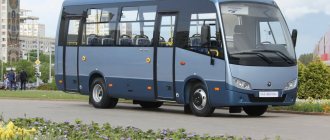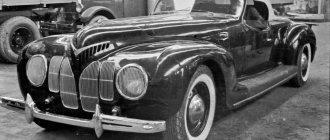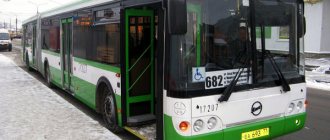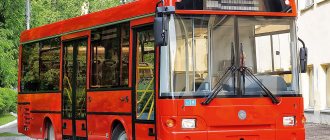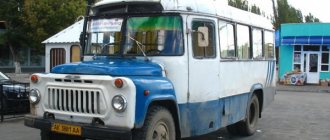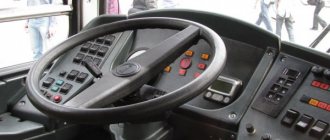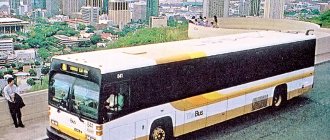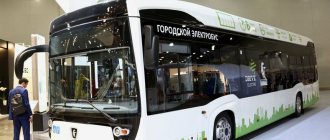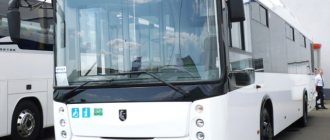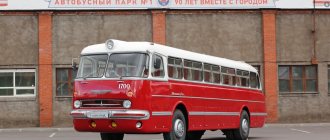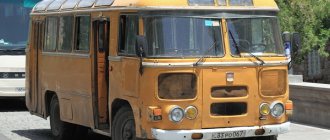Home > News > Classification of buses
Bus is a category of vehicle that can accommodate 9 or more passengers. Unlike rail types of transport and trolleybuses, a bus is more maneuverable. Modern buses are divided into two types: for transporting passengers and special-purpose vehicles.
Modern buses have a wide range of technical characteristics, as well as different levels of comfort, speed, and different external parameters.
Passenger buses are also divided into several types according to certain parameters. The main classification criterion is the capacity of the vehicle. For example, buses designed to transport passengers along city routes differ significantly in the number of passengers, internal arrangement and technical parameters from vehicles intended for tourist transportation. Renting buses for transporting passengers is in great demand today. At the same time, it is important to correctly decide which type of transport is best for the trip. More specific features of the classification of modern passenger buses are presented below.
By passenger capacity and length
Passenger capacity and length of the bus are critical in determining the destination of the bus. Based on this feature, vehicles can be divided into small, medium and large types.
Small
The small type of bus is designed to carry no more than 20 passengers per seat. The total number that can be transported on one bus should not exceed more than 40 people. The length of the body of a small vehicle for transporting passengers does not exceed 8 meters.
Small buses are often designed for urban and suburban routes and for short-distance tours. Thanks to its compact dimensions, this equipment is distinguished by good maneuverability and high performance. In addition, the cost of such buses is significantly lower than that of larger models. These characteristics make small types of buses the most attractive for entrepreneurs starting their own business in the field of passenger transportation.
Average
Buses included in the medium type category can accommodate no more than 60 people, 30 of whom can comfortably fit on the seats. The body of such a vehicle does not exceed 10 meters in length.
The average type of bus is considered universal. This technique is actively used both within the city on regular city routes, and for suburban and intercity regular and tourist flights.
In accordance with the purpose of the bus route - passenger or tourist, the internal content may be different. Tourist types are more convenient, have a different seating arrangement from passenger buses and additional options to ensure a comfortable trip for passengers.
Large
Large vehicles can simultaneously accommodate no more than 90 passengers, up to 40 of whom can occupy seats in the cabin. Large buses are most often intended for tourist and intercity transportation.
Such models are equipped with comfortable seats. The seats on buses are soft, with the function of adjusting the angle of the backrest. Each seat is additionally equipped with individual lighting; it is possible to have additional fans and other devices to ensure a more comfortable trip over long distances. Large buses easily transport passengers over distances of more than 500 kilometers.
Modifications of PAZ 3237
Today, on the base model platform, the manufacturer produces several modifications, which differ mainly in the use of different power units.
PAZ 3237-01 is equipped with a Cummins ISBe 150 engine and an automatic gearbox. The power unit develops power up to 150 horsepower, and the torque reaches 550 N*m at a rotation speed of 1500 rpm. The engine meets the requirements of EURO-3 environmental standards. The working volume is 3.9 liters.
PAZ 3237-03 is equipped with a Cummins 4ISBe 185B engine and an automatic or manual gearbox. The engine has a maximum net power of 183 horsepower at a crankshaft speed of 2500 rpm. The maximum torque is 636 N*m at a speed of 1200-1700 rpm. The working volume of the power unit is 4.5 liters. Environmental standard - EURO-3.
The PAZ 3237-05 is equipped with a Cummins ISF 3.8e4168 engine with a working power of 170 horsepower at a rotation speed of 2600 rpm. Maximum torque - 592 N*m at a speed of 1300-1700 rpm. Engine displacement is 3.76 liters. Complies with EURO-4 environmental safety standards. The gearbox is a six-speed automatic Allison-S2100.
PAZ 3237-09 received a Cummins ISBe 160V engine and an automatic gearbox. The power unit has a power of 160 horsepower, which is achieved at a rotation speed of 2500 rpm. The maximum torque value is 600 N*m at a rotation speed of 1300-1700 rpm. Engine displacement is 4.462 liters. Complies with EURO-4 environmental standard class. Also, this model uses rectangular headlights, while all other buses have round front lights.
Reviews about PAZ 3237 are mostly positive. It is praised for its economical engine, high maneuverability on the road and a good margin of safety for all components and assemblies. Drivers note responsive handling and a smooth ride, as well as convenient maintenance. Passengers have no complaints about the layout and decoration of the cabin. The only criticism concerns the poorly designed interior ventilation, which makes it very stuffy inside the bus in hot weather. For this feature, the vehicle received the popular nickname “oven”.
The price of a PAZ 3237 bus as of April 2014 is about 3 million rubles.
By purpose
In order to determine which route the bus will run, it is important to correctly determine the parameters of its purpose.
City buses must be spacious to ensure not only comfortable seating for passengers inside the vehicle, but also relatively free movement inside the bus. Urban routes require frequent stops within the city so that passengers can get off and on at a specific point along the route. For the same purposes, city buses should be equipped with spacious entrance areas and small steps in the middle and rear of the vehicle. In addition, urban models have a low floor and spacious storage areas. There are also separate seats for passengers with strollers and disabled people. A city bus must be equipped with good ventilation and heating equipment, natural and artificial lighting.
Suburban buses are in many ways similar to city buses. The main difference between such vehicles is the larger number of seats. Some models can reach higher speeds than necessary to move within the city. These buses are designed to transport passengers between settlements located a short distance from each other.
Urban buses are often used for suburban routes. This allows passenger carriers to significantly save money on the purchase and maintenance of equipment. However, if a commuter route involves transporting passengers in rural areas, buses with higher cross-country capacity than urban models are purchased.
Intercity and tourist buses differ both externally and in terms of internal content. Such cars, unlike urban and suburban models, develop higher speeds. At the same time, the high speed of the vehicle should not in any way affect the comfortable position of passengers inside the bus and their safety.
Intercity and touring models are usually equipped with only one door and have a spacious luggage compartment. Storage areas are not provided on such buses, since all passengers must be seated during travel.
The seats are equipped with a backrest angle adjustment mechanism. There is additional lighting and ventilation above each passenger seat, and there may be audio and video equipment. Buses intended for tourist routes are additionally equipped with a microphone and loudspeakers. Luxury models are additionally equipped with refrigerators, a bathroom, thermal heaters for drinks, and wardrobe compartments.
In addition to the most common types indicated, there are other variations:
- school buses for transporting children;
- apron or airfield – for transporting passengers from the airport building to the aircraft;
- service buses used to transport employees of a particular enterprise;
- party buses - party machines;
- shift, expedition, underground - for transporting people in particularly difficult conditions off-road or underground.
Passenger vehicles, depending on their purpose, design and passenger capacity, are divided into passenger cars and buses.
According to the international classification and OH 025 270-66 on this basis, buses are divided into 5 classes (from 22 to 62): extra small, small, medium, large, extra large.
| vehicle class | body length, m | 2 first digits index |
| especially small | up to 5.0 | 22 |
| small | 6,0 — 7,5 | 32 |
| average | 8,0 — 9,5 | 42 |
| big | 10,5 — 12,0 | 52 |
| especially large | bol. 12 | 62 |
The division by overall body length, which was economically important for the USSR, has lost its significance and remains relevant for intercity and tourist buses.
Buses differ from cars in the large (more than 8) number of seats for passengers.
Passenger capacity for city and suburban buses is calculated as the number of seats for sitting and standing, for other buses - for seating of passengers.
- Nominal capacity - off-peak: not min. 0.315 m2 for a seated passenger, 0.2 m2 for a standing passenger,
- Maximum capacity - during peak hours: up to 0.125 m2.
Based on passenger capacity, buses are divided into 5 classes:
- especially small (up to 10 seats), small (up to 25), medium (40-50), large (60-80), especially large capacity (100-120 seats).
The indicator in combination with the purpose dictates:
- dimensions and layout : number and placement of seats for passengers, hand luggage, luggage and personnel,
- interior equipment , traction, power and economic qualities of the bus power plant,
- higher requirements for the qualifications and experience of drivers (vehicles of category D).
Buses according to their intended purpose , each of which has design features related to operating conditions:
- urban (intra-city and suburban), local, intercity, tourist, excursion. special.
City buses are operated as urban linear public transport, which involves a large number of passengers, intensive passenger exchange, frequent stops and relatively short distances. Passengers are transported sitting and standing; in buses of particularly low capacity - only sitting. Operating conditions dictate the characteristics of city buses:
- a minimum of low steps, handrails and storage areas near the doors to speed up the exit and entry of a large number of passengers,
- a wide central passage and several wide doors, a flat and low floor,
- location and comfort of seats,
- The conductor's place is at the back door.
- large glass area, good artificial lighting, heating and ventilation.
Automatic hydromechanical transmissions of modern buses make the driver’s work easier. City buses include LAZ-695N, LAZ-695A, Ikarus-260 and LiAZ-677 buses.
Intercity buses are designed to transport only seated passengers over long distances, which necessitates comfortable soft seats with adjustable backrests, a 4-row seat arrangement, and large luggage compartments with space for hand luggage. The comfort of the cabin and seats is inversely proportional to the length of the routes. Sleeper buses are a modification of intercity buses equipped with sleeping berths.
Suburban buses are distinguished by their rare stops from city buses and short distances from intercity buses, so they usually do not have storage areas or handrails for passengers. On suburban routes, city buses and their modifications with a four-row interior layout and an increased number of seats and storage areas of smaller capacity are used. They may differ from urban ones in the smaller number of doors and their width.
Tourist buses , as a rule, belong to the large class, double-decker with large glazing for visibility. Long-distance buses are used on international, incl. long-distance tourist routes. These buses are often structurally close to intercity buses in a number of elements and are characterized by increased comfort.
Based on standard buses, modifications designed for special transportation are produced:
- Airport or apron buses: for transporting passengers to the aircraft off public roads.
- School ones: for transporting children, equipped with technical means to ensure safety: seat belts, special light and sound signals, low steps, handrails at a low height, shelves for hand luggage.
- Excursion services: for servicing excursions.
- Shift or expeditionary: for transporting workers to the site of repair, construction and other work.
- All-terrain vehicles: for transporting people in difficult road conditions.
- Cargo-passenger: for transporting goods and passengers.
- Communication buses (postal ): for postal transport. Intercity buses may have an insulated and sealed compartment for mail.
- Funeral buses: for servicing funeral processions.
- Club buses: for official purposes.
- Underground: serve the needs of mines.
Additional features are: the fuel used, special design, layout adopted by the designer, wheel formula.
For example: LAZ-4202 :
- LAZ - manufacturing plant (Lviv Automobile Plant),
- 4 — overall length (9.7 m),
- 2 - type of transport - bus,
- 02 - model number in the class.
